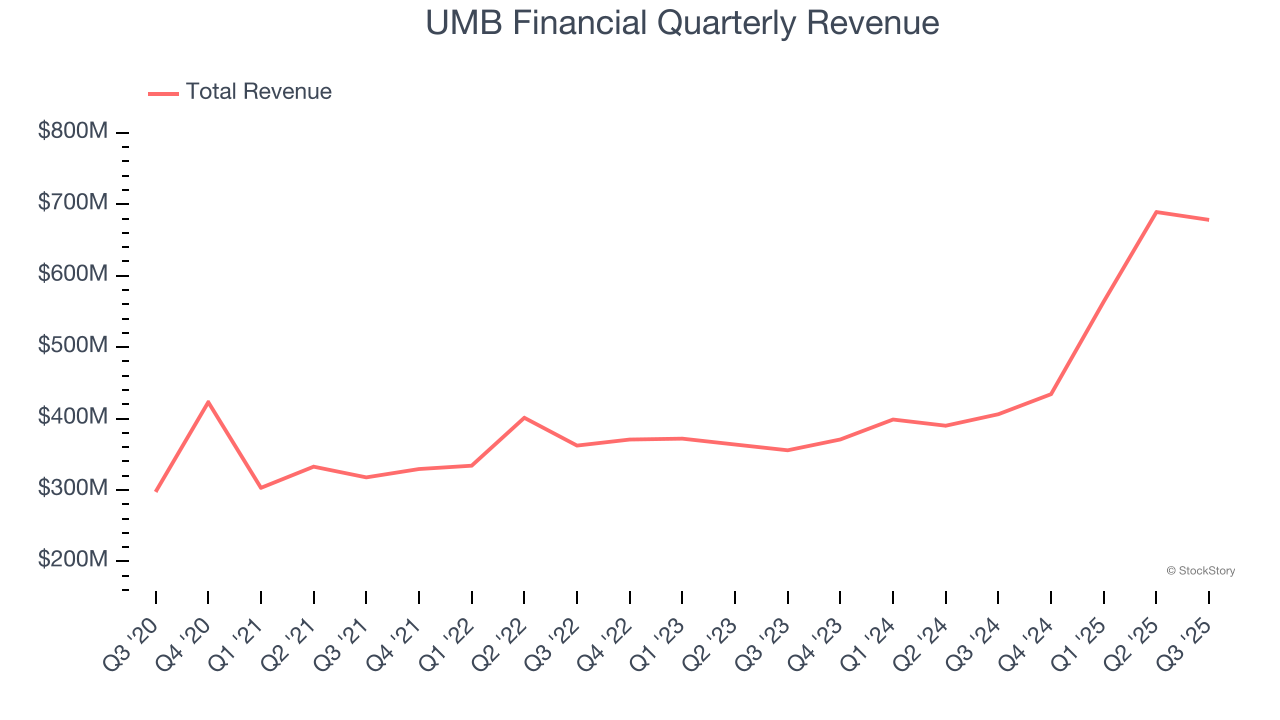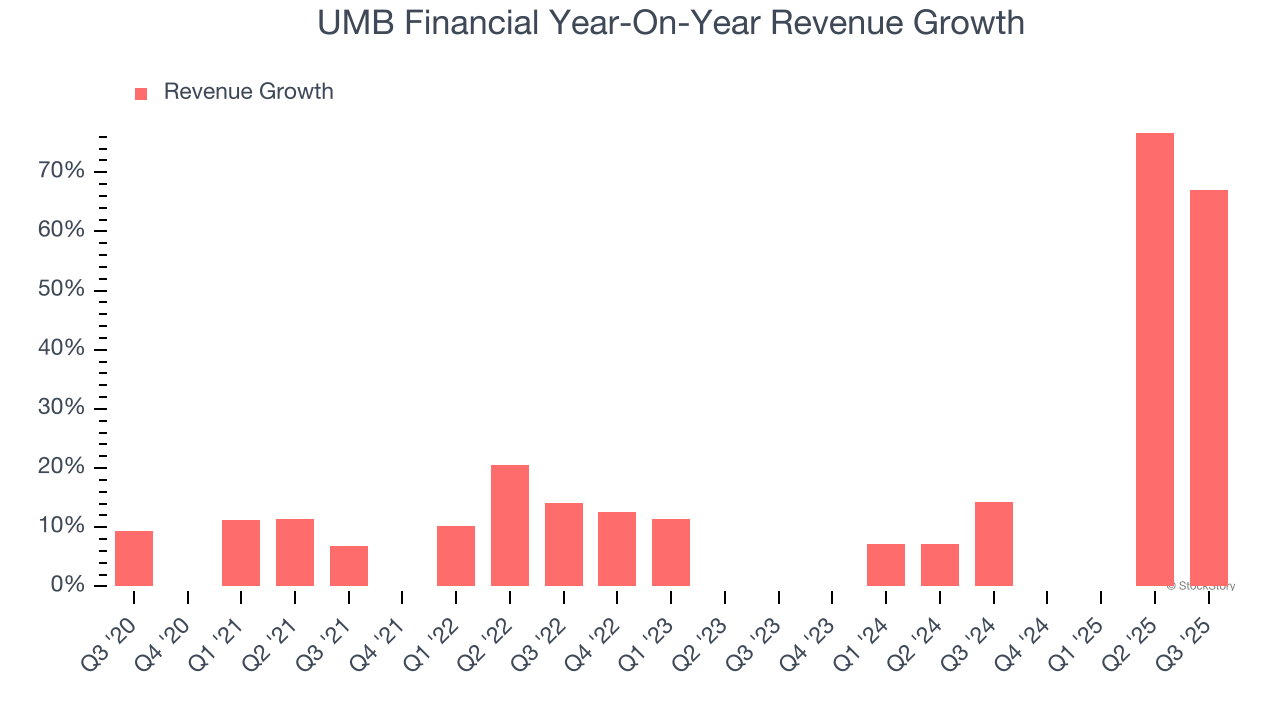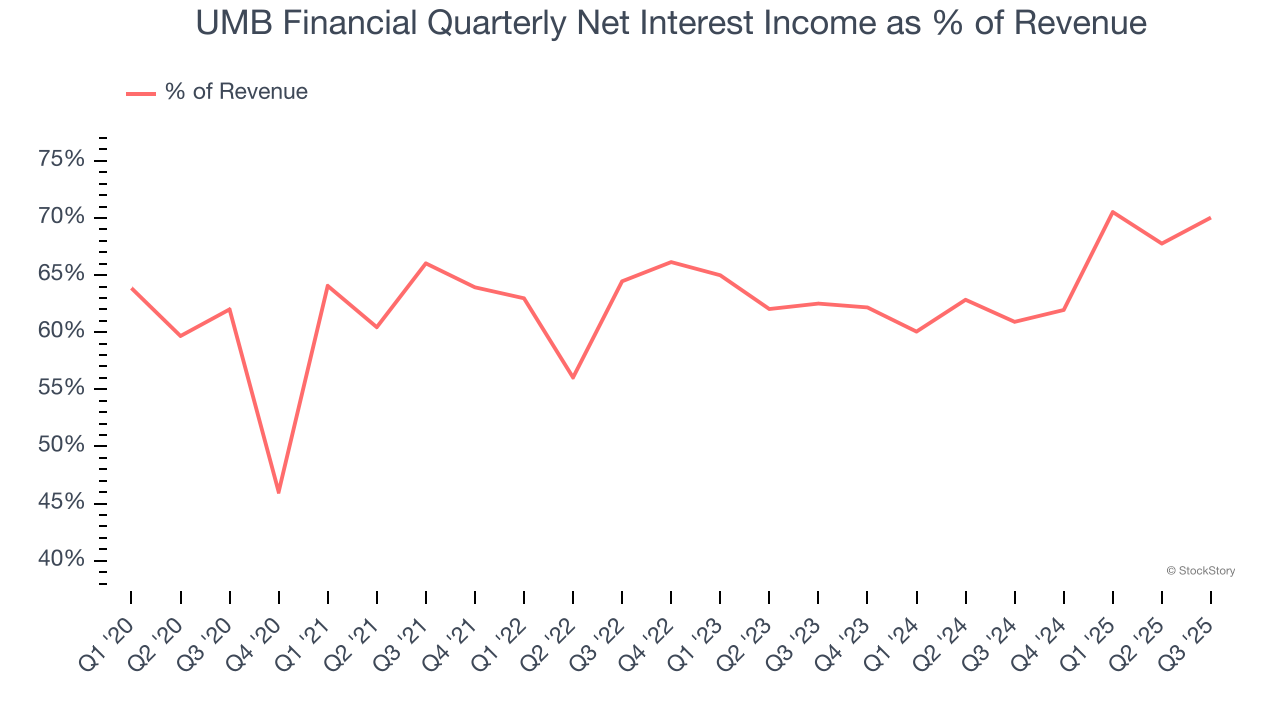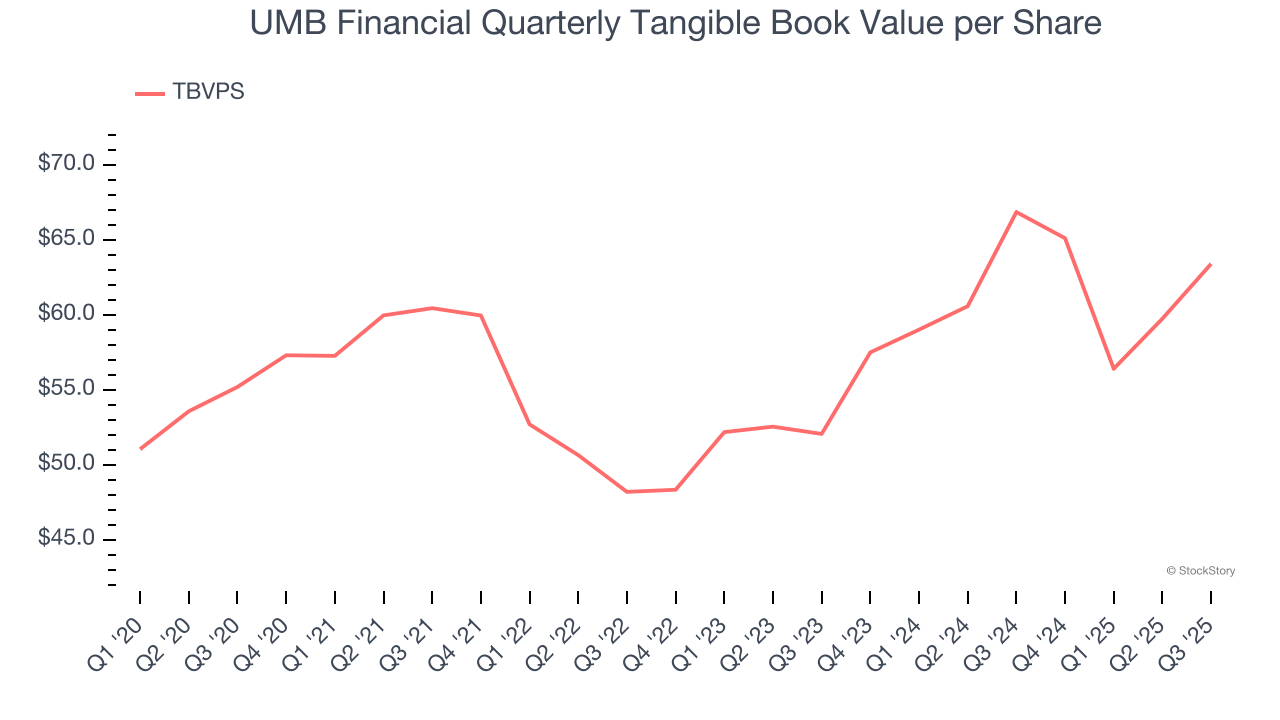
Regional banking company UMB Financial (NASDAQ: UMBF) announced better-than-expected revenue in Q3 CY2025, with sales up 67% year on year to $678.2 million. Its non-GAAP profit of $2.70 per share was 8% above analysts’ consensus estimates.
Is now the time to buy UMB Financial? Find out by accessing our full research report, it’s free for active Edge members.
UMB Financial (UMBF) Q3 CY2025 Highlights:
- Net Interest Income: $475 million vs analyst estimates of $477.4 million (92% year-on-year growth, in line)
- Net Interest Margin: 3% vs analyst estimates of 3% (in line)
- Revenue: $678.2 million vs analyst estimates of $654.6 million (67% year-on-year growth, 3.6% beat)
- Efficiency Ratio: 58.1% vs analyst estimates of 56.3% (181.5 basis point miss)
- Adjusted EPS: $2.70 vs analyst estimates of $2.50 (8% beat)
- Tangible Book Value per Share: $63.40 vs analyst estimates of $62.25 (5.2% year-on-year decline, 1.9% beat)
- Market Capitalization: $8.54 billion
“We are extremely pleased to have completed the final milestone of our Heartland Financial USA, Inc. acquisition by successfully executing the systems and brand conversion following the third quarter,” said Mariner Kemper, UMB Financial Corporation chairman and chief executive officer.
Company Overview
With roots dating back to 1913 and a name derived from "United Missouri Bank," UMB Financial (NASDAQ: UMBF) is a financial holding company that provides banking, asset management, and fund services to commercial, institutional, and individual customers.
Sales Growth
Two primary revenue streams drive bank earnings. While net interest income, which is earned by charging higher rates on loans than paid on deposits, forms the foundation, fee-based services across banking, credit, wealth management, and trading operations provide additional income. Thankfully, UMB Financial’s 15.5% annualized revenue growth over the last five years was incredible. Its growth beat the average banking company and shows its offerings resonate with customers, a helpful starting point for our analysis.

Long-term growth is the most important, but within financials, a half-decade historical view may miss recent interest rate changes and market returns. UMB Financial’s annualized revenue growth of 27.2% over the last two years is above its five-year trend, suggesting its demand was strong and recently accelerated.  Note: Quarters not shown were determined to be outliers, impacted by outsized investment gains/losses that are not indicative of the recurring fundamentals of the business.
Note: Quarters not shown were determined to be outliers, impacted by outsized investment gains/losses that are not indicative of the recurring fundamentals of the business.
This quarter, UMB Financial reported magnificent year-on-year revenue growth of 67%, and its $678.2 million of revenue beat Wall Street’s estimates by 3.6%.
Net interest income made up 62.8% of the company’s total revenue during the last five years, meaning lending operations are UMB Financial’s largest source of revenue.

Net interest income commands greater market attention due to its reliability and consistency, whereas non-interest income is often seen as lower-quality revenue that lacks the same dependable characteristics.
Software is eating the world and there is virtually no industry left that has been untouched by it. That drives increasing demand for tools helping software developers do their jobs, whether it be monitoring critical cloud infrastructure, integrating audio and video functionality, or ensuring smooth content streaming. Click here to access a free report on our 3 favorite stocks to play this generational megatrend.
Tangible Book Value Per Share (TBVPS)
Banks are balance sheet-driven businesses because they generate earnings primarily through borrowing and lending. They’re also valued based on their balance sheet strength and ability to compound book value (another name for shareholders’ equity) over time.
This is why we consider tangible book value per share (TBVPS) the most important metric to track for banks. TBVPS represents the real, liquid net worth per share of a bank, excluding intangible assets that have debatable value upon liquidation. On the other hand, EPS is often distorted by mergers and flexible loan loss accounting. TBVPS provides clearer performance insights.
UMB Financial’s TBVPS grew at a sluggish 2.8% annual clip over the last five years. However, TBVPS growth has accelerated recently, growing by 10.4% annually over the last two years from $52.06 to $63.40 per share.

Over the next 12 months, Consensus estimates call for UMB Financial’s TBVPS to grow by 15.9% to $73.50, elite growth rate.
Key Takeaways from UMB Financial’s Q3 Results
We enjoyed seeing UMB Financial beat analysts’ revenue expectations this quarter. We were also happy its tangible book value per share outperformed Wall Street’s estimates. On the other hand, its net interest income was in line. Overall, this print had some key positives. The stock traded up 4.8% to $117.88 immediately after reporting.
UMB Financial may have had a good quarter, but does that mean you should invest right now? What happened in the latest quarter matters, but not as much as longer-term business quality and valuation, when deciding whether to invest in this stock. We cover that in our actionable full research report which you can read here, it’s free for active Edge members.








